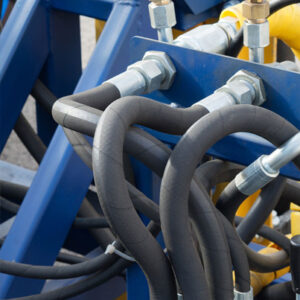Your septic system is one of the unsung heroes of your home. It quietly manages your household wastewater, keeping everything flowing smoothly. But what happens when it stops working correctly? A clogged or damaged septic system can cause a mess, foul odors, and expensive repairs if ignored. The good news is that many septic problems can be addressed if you act promptly.
In this guide, we’ll walk you through how to repair your septic system in a way that’s safe, effective, and easy to understand. By the end, you’ll have practical steps to fix common issues and keep your system running like new.
Identify the Problem Quickly
Before you can fix anything, you need to know what’s wrong. Is water backing up in your sinks or toilet? Do you notice bad smells around your yard? Or maybe the ground near your septic tank feels unusually soggy. These are clear signs that your system needs septic repair. Take notes of what you see and smell—it will guide the next steps. Catching problems early is essential because a small repair now can save you from a major replacement later.
Check the Septic Tank
Your septic tank is the heart of the system. Over time, solids accumulate at the bottom, and scum floats on top. If the tank becomes too full, it can’t handle wastewater properly. Start by locating the tank lid and carefully opening it. Use a flashlight to inspect inside. Look for signs of heavy sludge, blockages, or cracks. If the tank is too full, it might just need pumping, which is one of the easiest ways to prevent major repairs. Remember, safety first—never enter a septic tank.
Examine the Pipes and Connections
Clogs don’t always happen in the tank itself. Sometimes the pipes leading to or from the tank are blocked or damaged. Check for roots growing near the system, collapsed pipes, or any signs of leaks. You can use a plumber’s snake or hose to gently test for blockages. Avoid harsh chemicals—they may damage your septic system instead of helping. Proper maintenance now can prevent the need for costly pipe replacements later.
Address a Clogged Drain Field
Your drain field is where the treated wastewater goes into the soil. If it becomes clogged, water will back up into your home. Common signs include soggy patches in the yard, strong odors, or slow drains. Fixing a drain field often involves removing blockages or aerating the soil to improve absorption. In severe cases, you might need to repair or replace a section of the field. Acting fast helps your yard recover and keeps your home safe from contamination.
Repair Small Tank Leaks
A crack in your septic tank can cause wastewater to leak into the soil, which is both dangerous and unhealthy. Small cracks can sometimes be repaired using specially designed epoxy or sealants made for septic systems. Clean the area thoroughly before applying the repair material, and follow the product instructions carefully. For larger cracks or structural damage, it’s best to consult a professional. This step ensures that your tank continues to function without contaminating your yard or groundwater.
Maintain Proper Bacteria Balance
Healthy bacteria in your septic tank break down solids and keep your system running efficiently. Avoid pouring harsh chemicals, bleach, or excessive grease down your drains—they can kill helpful bacteria. If needed, you can add natural bacterial additives that help restore balance. Keeping your septic tank biologically active reduces the risk of clogs and extends the life of your system. Think of it as feeding the tiny workers that keep everything flowing.
Pumping Your Septic Tank Regularly
Even if everything seems fine, regular pumping is crucial. Depending on your household size, a septic tank usually needs to be pumped every three to five years. Pumping removes the sludge and scum that can’t exit the tank on their own. Skipping this maintenance is one of the most common reasons septic systems fail. Setting up a schedule for pumping prevents sudden backups and costly repairs.
Know When to Call a Professional
Some repairs are best left to trained experts. If your septic tank has structural damage, the drain field is completely clogged, or you suspect a major pipe collapse, professional intervention is safer and more effective. A certified septic repair team can diagnose the problem accurately, perform repairs safely, and ensure your system meets local codes. Don’t wait too long—delaying professional help can lead to more expensive and messy problems.
Keep a Septic-Friendly Home Routine
Repairing your system is one part; preventing future problems is another. Simple habits like avoiding pouring grease down the sink, using water efficiently, and not overloading the system with excessive waste can make a huge difference. Educate everyone in your household about septic-friendly practices. These small actions keep your system healthy for years and reduce the need for repairs.
Regular Inspections Are Key
Even if your septic system seems fine, schedule regular inspections. A professional can identify potential issues before they become emergencies. Inspections also give you peace of mind, knowing your septic system is safe and functioning correctly. Think of it like a health check-up for your home—it’s much better to catch small problems early than face a major repair down the line.
Safety Precautions to Follow
Septic systems handle hazardous waste, so safety is crucial. Always wear gloves and protective clothing when inspecting your tank or pipes. Never enter the tank yourself, and avoid inhaling any harmful fumes. Keep children and pets away from areas where septic repairs are happening. Following safety guidelines protects you and ensures repairs are done without unnecessary risk.
Cost-Saving Tips During Repairs
Septic repairs can be expensive, but there are ways to save money. Start with minor repairs, like clearing clogs or applying sealant to small cracks, before moving to major replacements. Compare quotes from multiple service providers, and consider preventive maintenance plans. Some communities even offer local resources or rebates for septic maintenance. Smart planning helps you manage costs without compromising safety or quality.
When Replacement Is the Best Option
Sometimes, repair is not enough. If your tank is decades old, the pipes are severely damaged, or the drain field is failing completely, replacement may be the most cost-effective solution in the long run. A new system ensures reliability, protects your home, and meets modern environmental standards. Consult professionals to evaluate whether repair or replacement is the right choice for your property.
Final Tips for Long-Term Septic Health
A little care goes a long way. Keep records of pumping, repairs, and inspections. Watch for early warning signs like slow drains or unusual odors. Avoid planting large trees near your system, as roots can damage pipes. Maintaining your septic system regularly not only prevents emergencies but also preserves the value and safety of your home.
Septic repair doesn’t have to be overwhelming. By understanding your system, addressing problems promptly, and following safe, practical steps, you can keep your septic system working efficiently for years. Whether it’s a minor clog or a more serious leak, acting early is always the smartest choice.
For professional guidance and services related to septic repair, consider checking out NoCo Septic at nocoseptic.com. They specialize in helping homeowners keep their systems healthy and functioning smoothly.
FAQs
How do I know if my septic system needs repair?
Common signs include slow drains, foul odors, soggy spots in your yard, or sewage backups. Catching issues early makes repair easier and cheaper.
Can I repair my septic system myself?
Minor repairs like clearing clogs or sealing small cracks can be done safely at home, but structural damage or major blockages should be handled by professionals.
How often should a septic system be inspected?
A septic system should be inspected at least every 1–3 years, and pumped every 3–5 years depending on household size and usage. Regular checks prevent serious issues.

